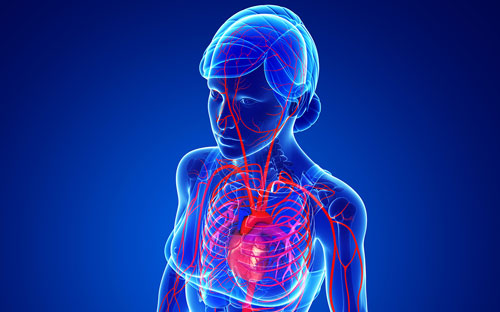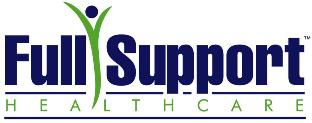What are varicose veins?
Varicose veins are veins under the skin of the legs, which have become widened, bulging, and twisted. They are very common and do not cause medical problems in most people. There are two main systems of veins in the legs:
- Deep veins: The leg muscles squeeze the deep veins during walking, carrying most of the blood back up the legs to the heart.
- Superficial veins: These occur under the skin which are less important and can form varicose veins.
All of these veins contain one-way valves to ensure that the blood flows towards the heart. Failure of these valves allows blood to flow backwards down the veins and results in an overload of pressure when standing. This excess pressure leads to widening of the veins so that they do not close properly. Blood then flows back into the leg along these veins and causes varicose veins to develop. Raised pressure in these veins also encourages the development of spider veins and discoloured areas which look like bruises.
What causes varicose veins?
Varicose veins and spider veins often run in families and there may be a hereditary component. Women are more likely to suffer from varicose veins and up to 50% of women may be affected. Hormonal factors including puberty, pregnancy, menopause, the use of birth control pills, and HRT affect the disease.
Pregnancy: It is very common for pregnant women to develop varicose veins during the first trimester. Pregnancy causes increases in hormone levels and blood volume which in turn cause veins to enlarge. In addition, the enlarged uterus causes increased pressure on the veins. Varicose veins due to pregnancy often improve within 3 months after delivery. However, with successive pregnancies, abnormal veins are more likely to remain.
Other predisposing factors include ageing, standing for long periods of time, obesity and leg injury.
What are the symptoms?
Many people have no symptoms at all from their varicose veins, except for the fact that they are noticeable and their appearance can be embarrassing. Other than cosmetic embarrassment, the most common symptoms of varicose veins are aching, discomfort and heaviness of the legs, which are usually worse at the end of the day. Sometimes the ankle can swell, too. These symptoms are not medically serious, but can be treated if they are sufficiently troublesome.
Although varicose veins can get worse over the years, this often happens very slowly. In a few people the high pressure in the veins causes damage to the skin near the ankle, which can become brown in colour, sometimes with scarred white areas. Eczema (a red skin rash) can develop. If these skin changes are allowed to progress, or if the skin is injured, an ulcer may develop. Skin changes are therefore a good reason for going to see your GP and for referral to a specialist. In many areas there are special leg ulcer bandaging clinics, supervised by the skin specialists and run by specially trained nurses. Your GP may refer you there, rather than to a surgeon in the first instance.
Other problems which varicose veins can occasionally produce:
What tests are there to investigate varicose veins?
Most varicose veins originate from leaking valves at groin level or behind the knee. It is important to accurately locate the site of the valve leaks. At your outpatient appointment the doctor will use a small probe to assess your veins, this is called continuous wave Doppler. The probe can detect the direction of blood flow which is audible, both in the skin veins and in the deep veins. It indicates where the veins have come from and helps in the planning of any operation that might be required. An ultrasound scan (duplex) may be performed instead. This will allow detailed examination of your deep veins particularly if there is a past history of deep vein thrombosis.
Varicose veins behind the knee and recurrent varicose veins will also require duplex scanning.
Treatments available:
- The operation
- Endovenous Laser Therapy
- Foam Sclerotherapy
- Radiofrequency ablation
All of the above will require duplex scanning as part of their selection process and the monitoring of the treatment itself. Very occasionally, if the scan is not clear, an X-ray of the veins, called a venogram, may be required. This involves the injection of dye (contrast) into a vein in the foot. The contrast can be seen outlining the veins in the calf and thigh, and is the best way of detecting previous damage to the deep veins.
Other scans which are sometimes used include MRI and CT.
Is treatment successful?
Stockings are effective in controlling symptoms and preventing skin complications. They are only effective if worn regularly, but can reliably avoid the need for surgery in the majority of patients.
Injection of varicose veins can be successful, but the long term outcome of the new treatment of foam sclerotherapy requires further evaluation.
Surgery is followed by a recurrence rate (varicose veins returning) of about 1 in 7 over a ten year period. This recurrence may be due to poorly planned or performed surgery, new vein formation, or due to new valve leaks beginning elsewhere. There is a small risk of deep vein thrombosis (DVT) after surgery which can be reduced by wearing compression stockings and remaining mobile after the operation.
Can I help myself?
Simple measures such as wearing support stockings will control the symptoms for many people. Stockings may help to prevent progression or enlargement of varicose veins. If you are overweight you should try and lose weight.
More information and advice about vascular health.
Whilst we make every effort to ensure that the information contained on this site is accurate, it is not a substitute for medical advice or treatment, and the Circulation Foundation recommends consultation with your doctor or health care professional.
The Circulation Foundation cannot accept liability for any loss or damage resulting from any inaccuracy in this information or third party information such as information on websites to which we link.
The information provided is intended to support patients, not provide personal medical advice.









